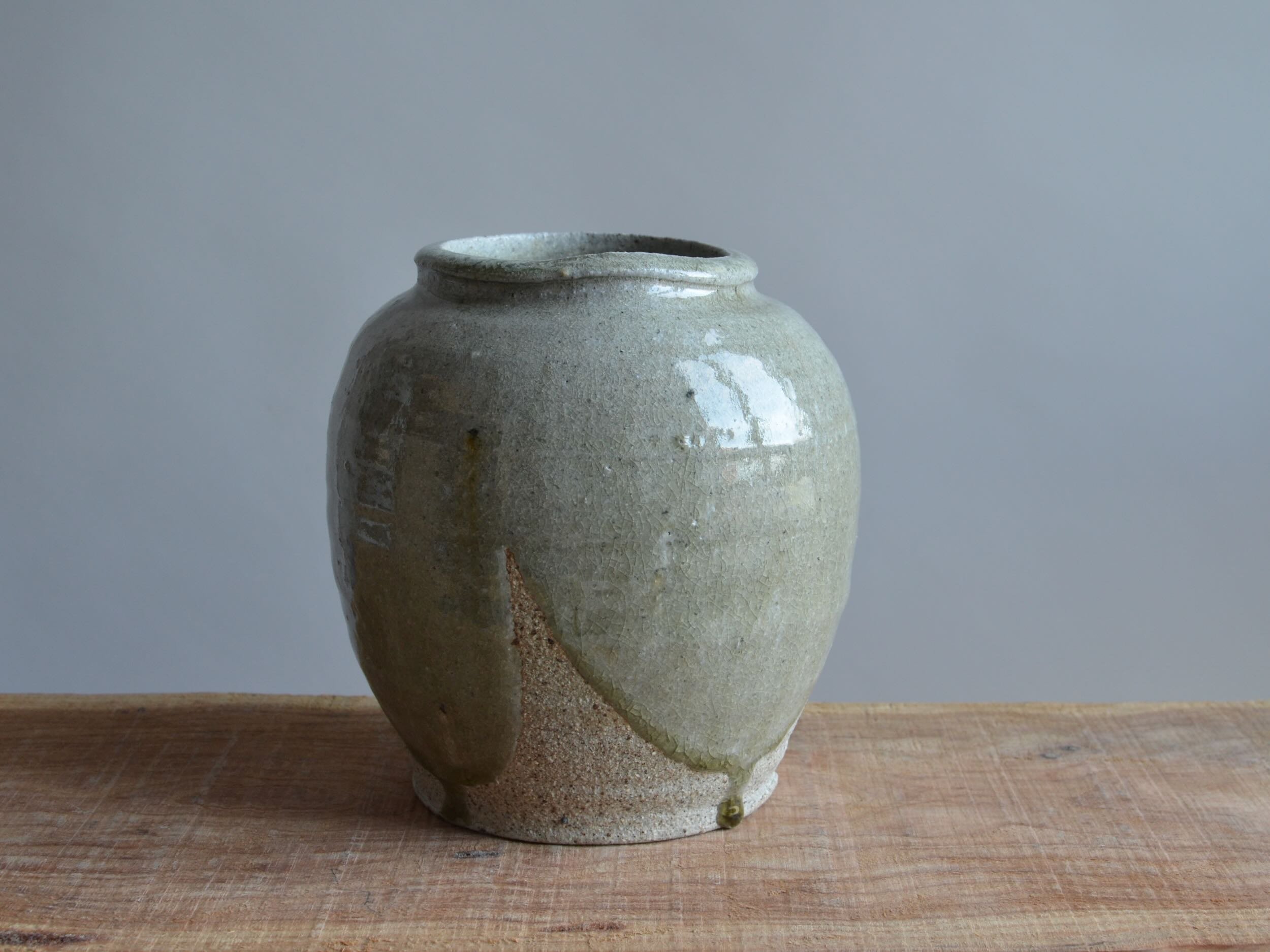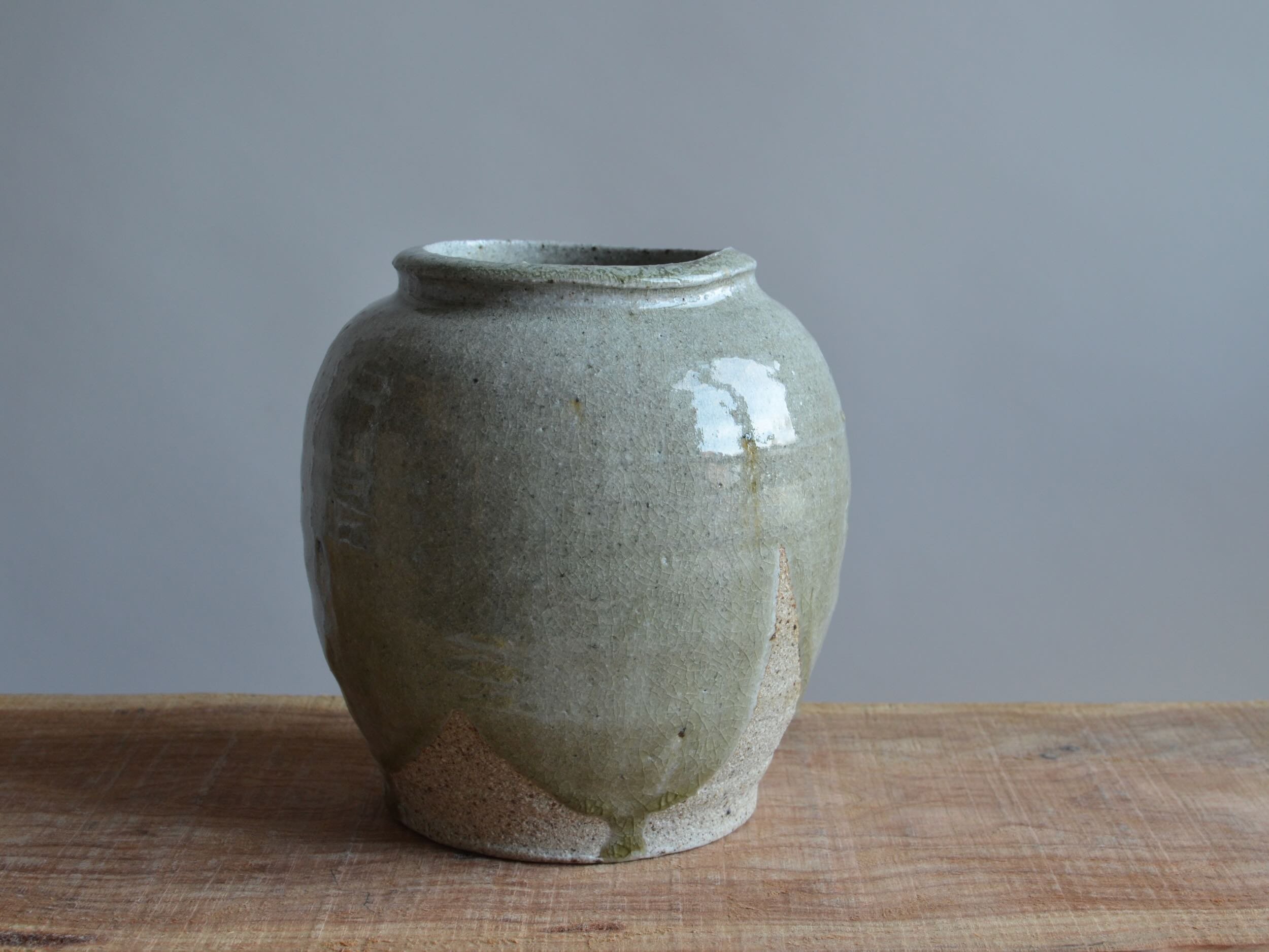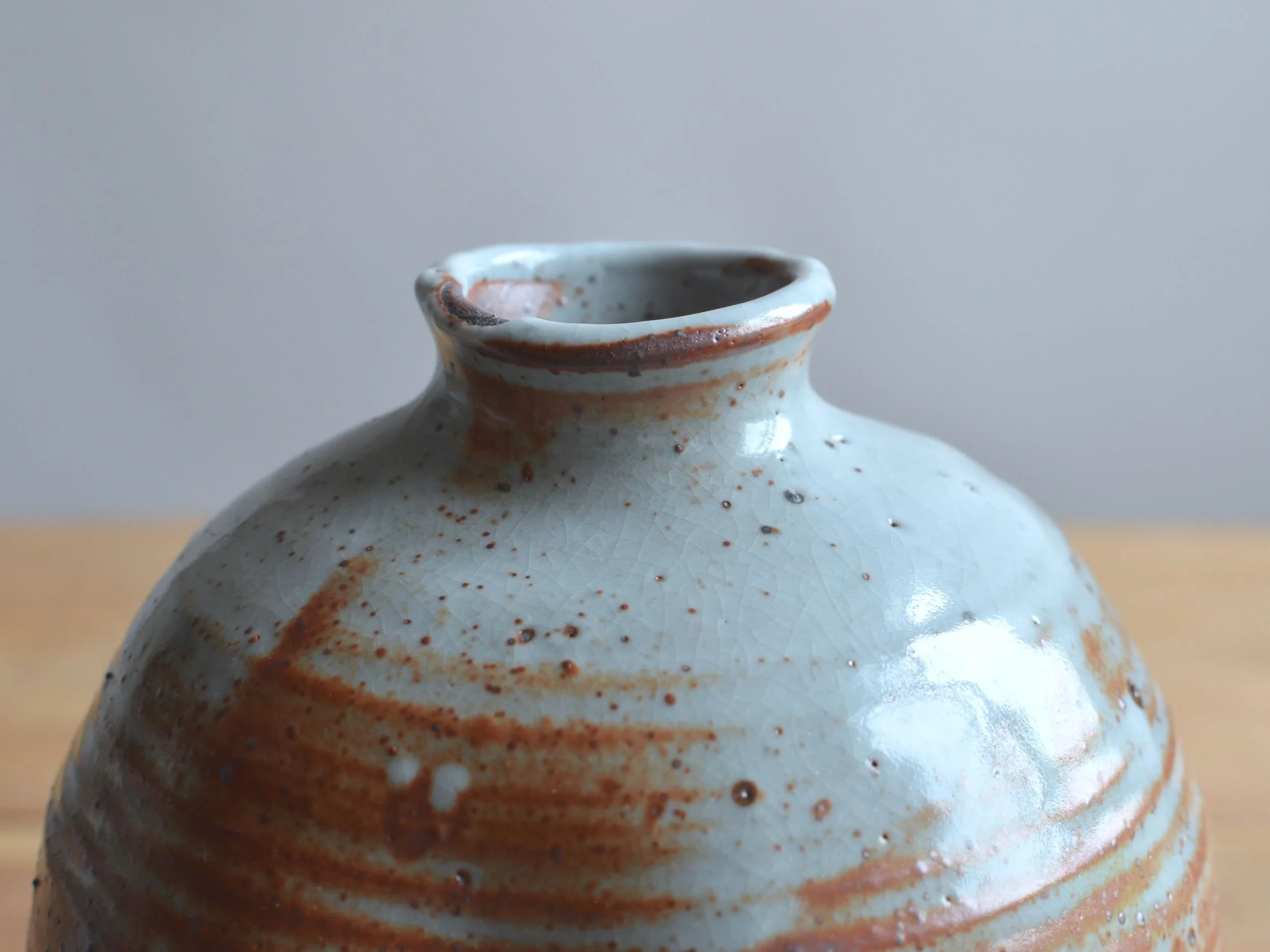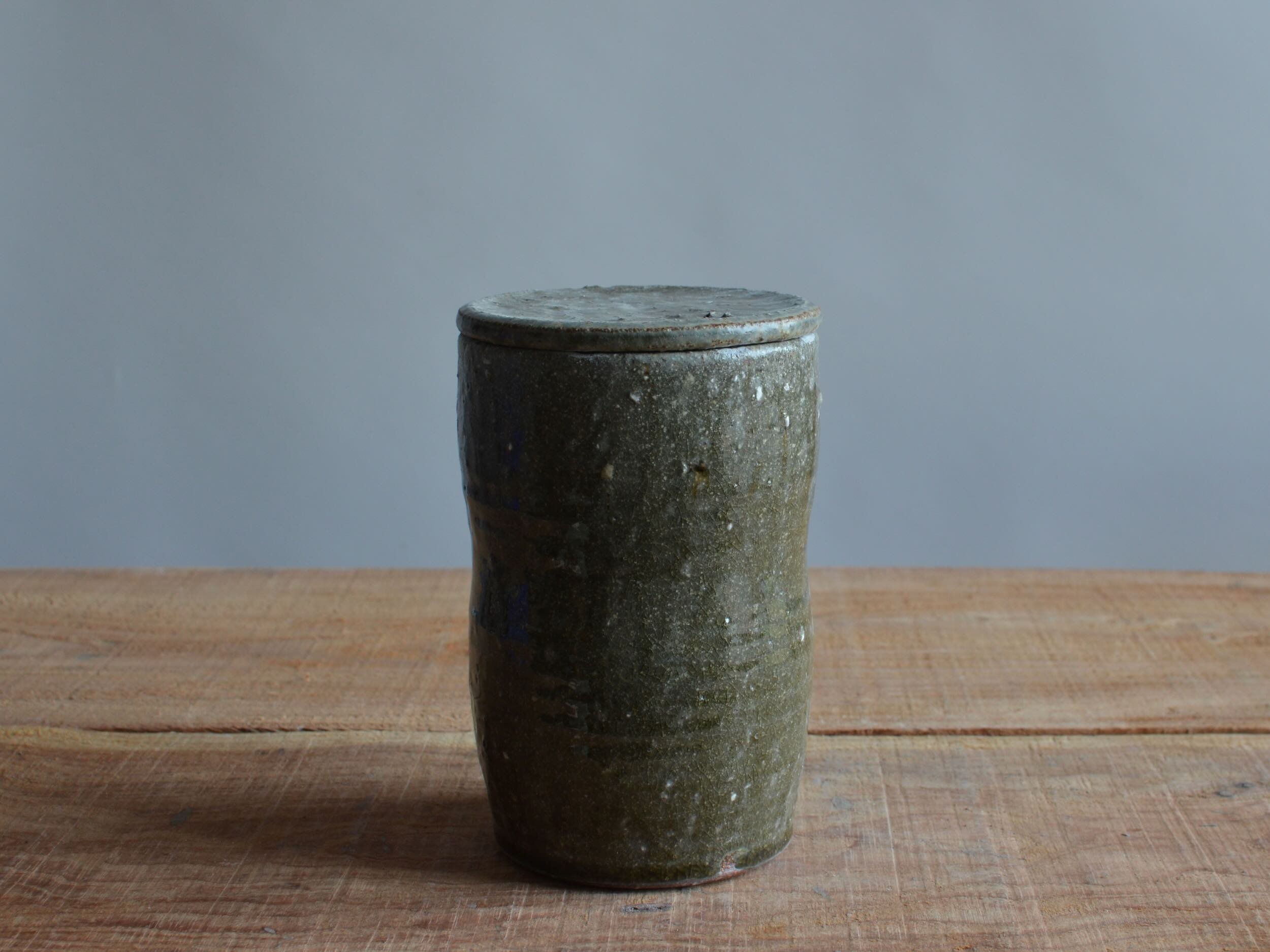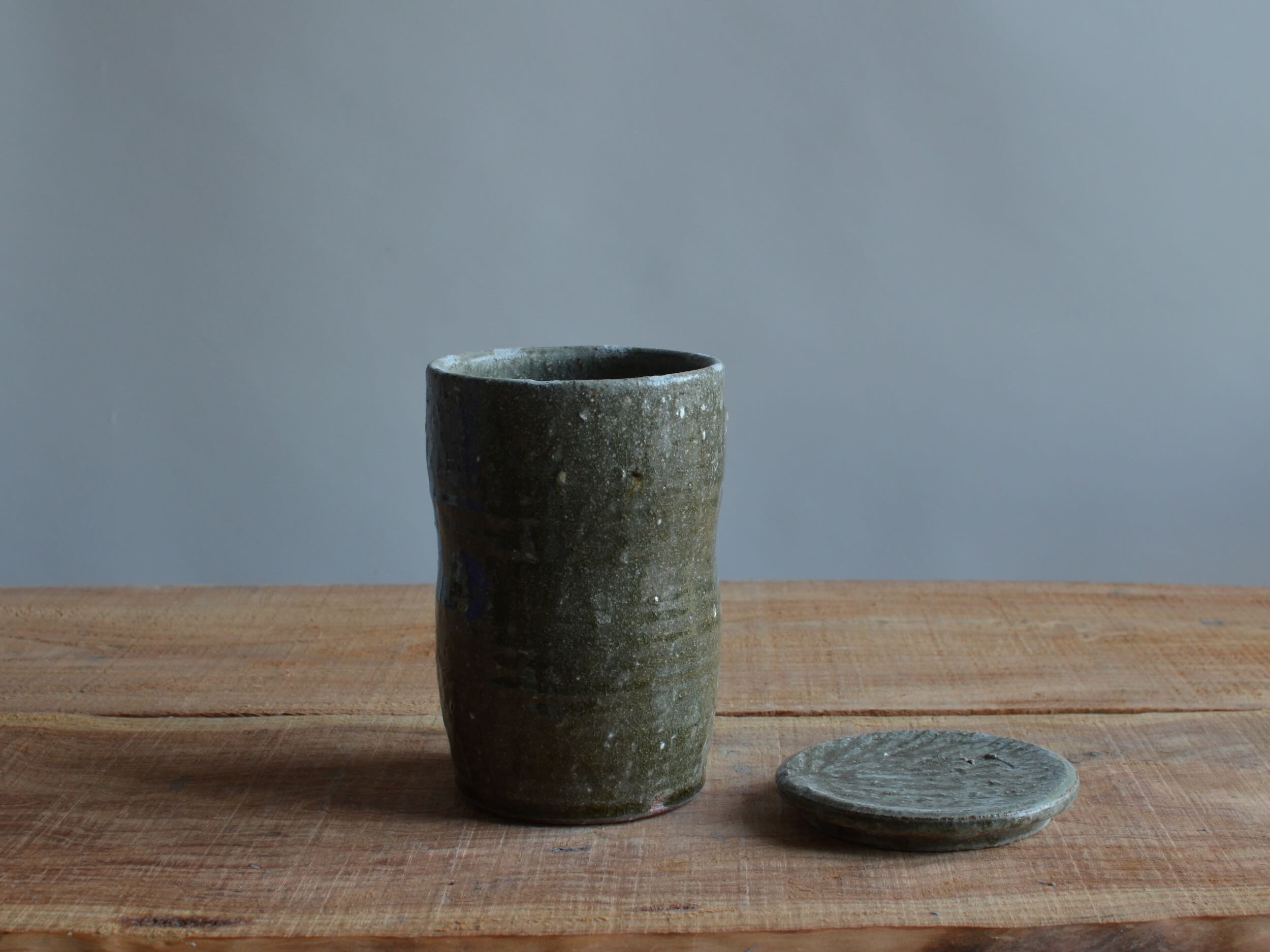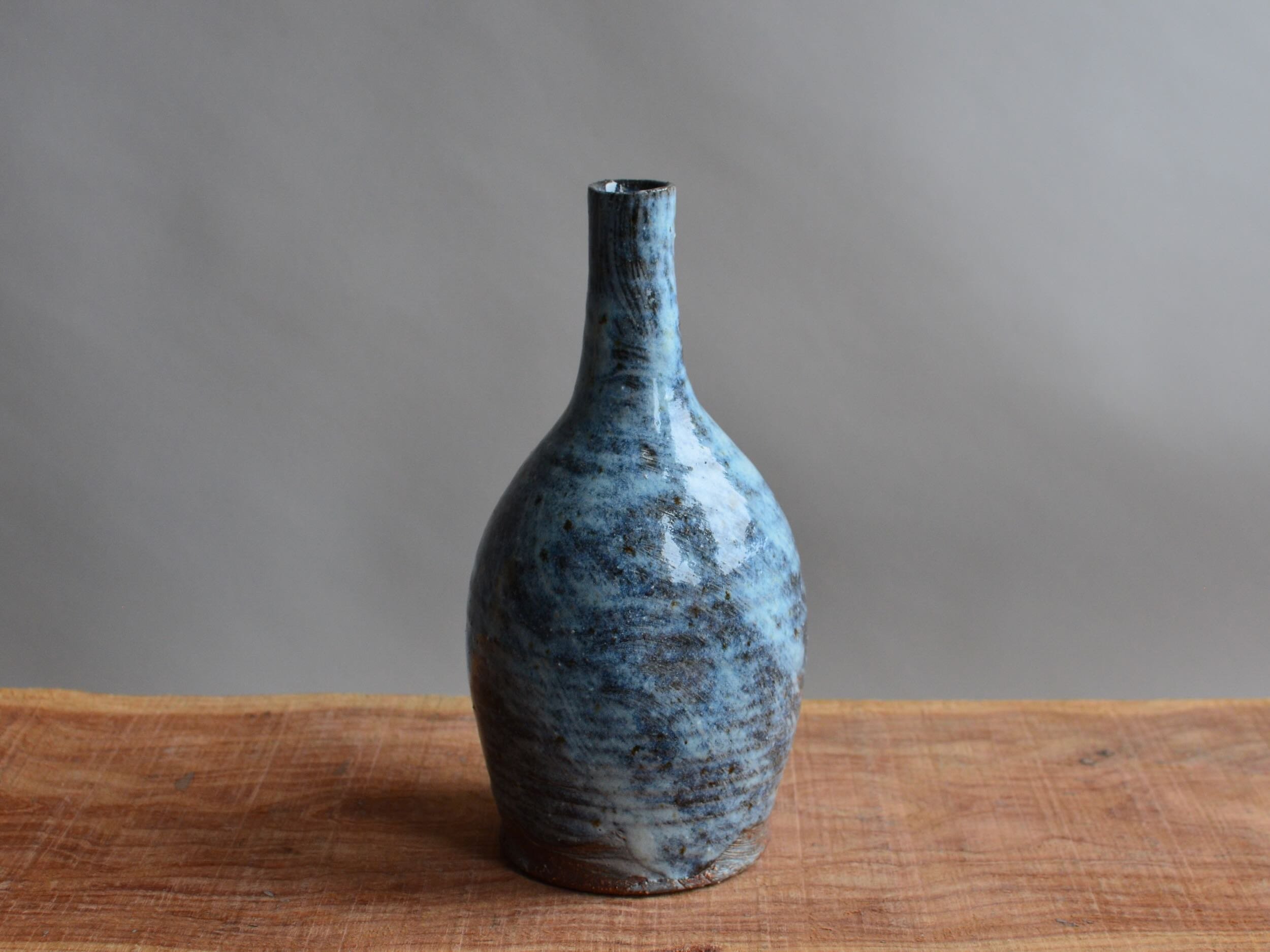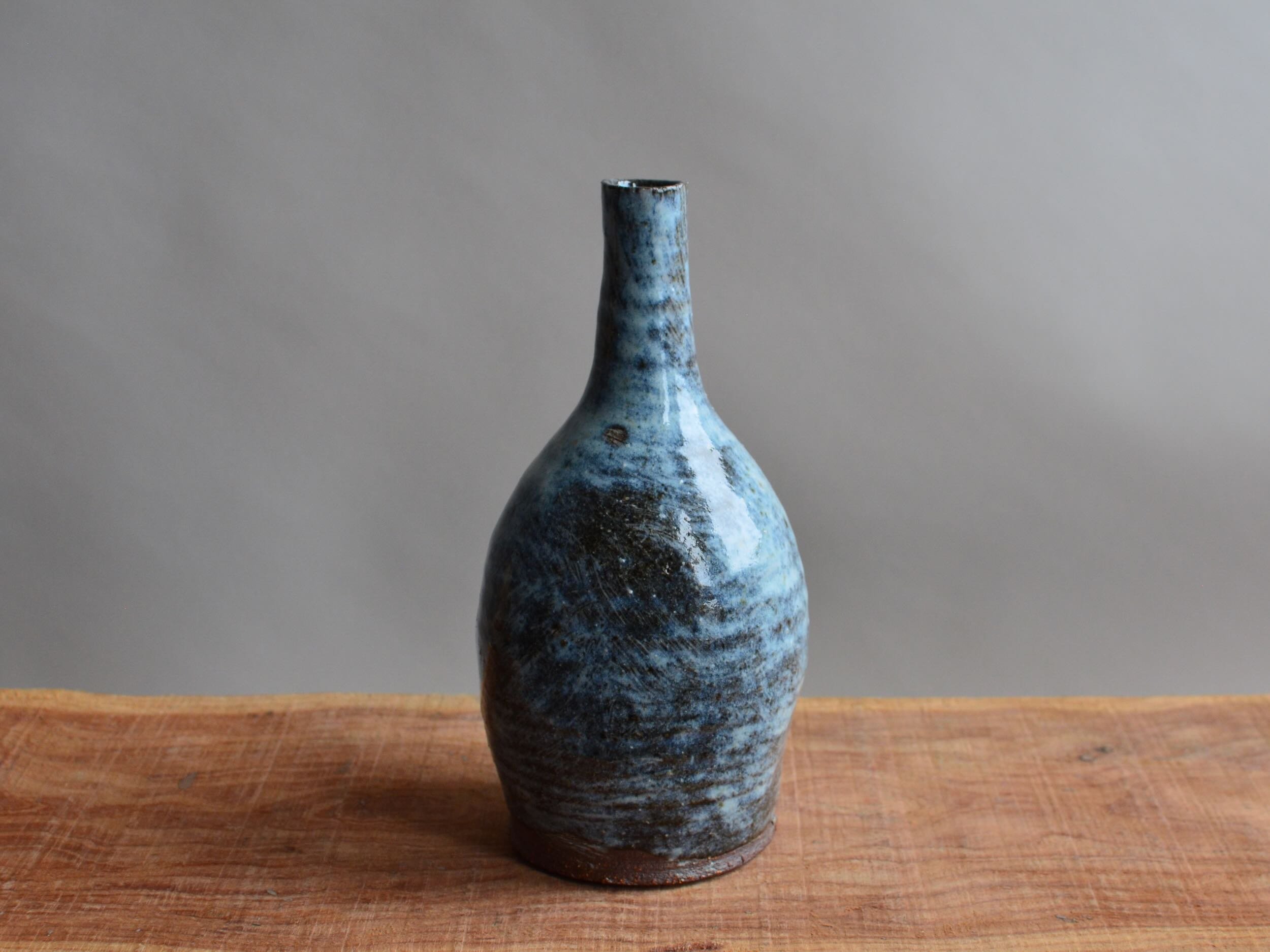Rice bale vase I






Rice bale vase I
Thrown and constructed bottle vase in a textured stoneware/porcelain mixed clay with white slip and wood-ash glaze.
The unusual shape of this vase is based on historic Korean pottery forms (the oldest examples date from the 15th century Joseon dynasty), and is supposed to represent a bale of rice straw. The loosely applied slip also references Korean Buncheong slip-decorated pottery.
I would advise not to place this vase directly onto unprotected furniture if it is to contain water for displaying flowers. Although I have tested it myself and have found no leaks, the highly textured material sometimes leaves tiny pathways in the base or walls which water can eventually find a way through. Condensation can also form under the base of a vase if water is sitting directly inside for some time - protect your valuable items of furniture!
h. 18 x w. 15.5 x d. 14cm
